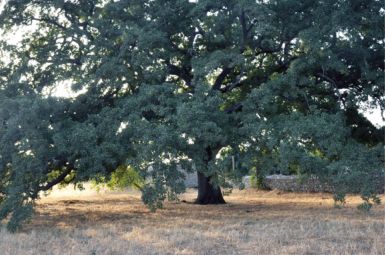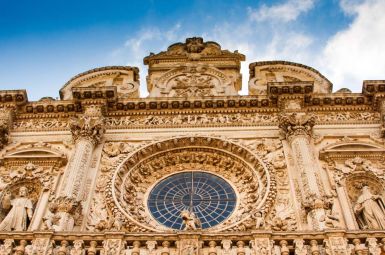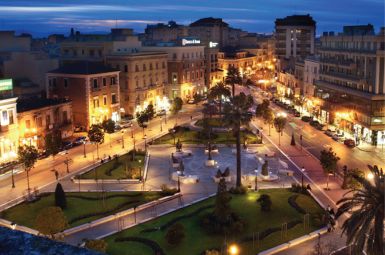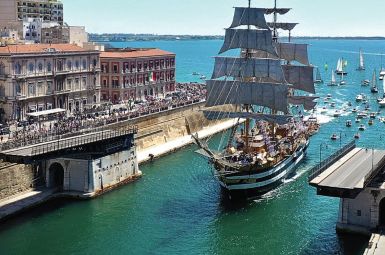
Pescocostanzo
Il Borgo di Pescocostanzo
Pescocostanzo: Il Gioiello d’Abruzzo Sospeso tra Cielo e Filigrana
Pescocostanzo (AQ) non è un semplice borgo di montagna, è un capolavoro a cielo aperto. Adagiato a oltre 1400 metri di altitudine sull’Altopiano delle Cinquemiglia, questo magnifico paese in provincia dell’Aquila cattura l’anima con l’eleganza discreta della sua architettura rinascimentale e barocca, forgiata nella pietra, nel ferro e nell’oro. È il luogo dove l’arte, l’artigianato e la natura maestosa della Majella si fondono in un’esperienza unica e raffinata.L’Eleganza Scolpita nella Pietra: L’Architettura
Pescocostanzo si distingue per il suo centro storico quasi interamente preservato, un vero e proprio museo di stile che attesta un passato di grande fioritura economica e culturale.- Trionfo Barocco e Rinascimentale: Le sue strade non sono rustiche, ma nobili. Passeggiando tra i vicoli si scoprono palazzi gentilizi riccamente decorati con portali in pietra scolpita e balconi in ferro battuto. Un’armonia architettonica che le è valsa l’inclusione tra i Borghi più Belli d’Italia.
- La Basilica di Santa Maria del Colle: Il cuore spirituale del borgo è questo splendido edificio, un complesso monumentale che custodisce tesori come cancelli in ferro battuto, soffitti lignei intagliati e un maestoso coro. Simbolo della perizia degli artigiani locali.
Arte e Tradizione: Il Cuore Artigiano
La fama di Pescocostanzo travalica i confini regionali grazie a due arti millenarie, emblemi di eleganza e dedizione.- La Presentosa e l’Oro: Pescocostanzo è uno dei centri storici dell’arte orafa abruzzese. Qui, maestri artigiani continuano a forgiare gioielli unici con tecniche antiche, tra cui la celeberrima Presentosa. Questo monile a forma di stella in filigrana d’oro, spesso donato come promessa d’amore, è un capolavoro di dettagli intricati e simbolismo sentimentale.
- Il Merletto a Tombolo: Un altro vanto locale è l’arte del merletto a tombolo, una tradizione femminile che produce pizzi e merletti di incredibile finezza e bellezza. La maestria delle merlettaie di Pescocostanzo è riconosciuta a livello internazionale.
Natura Viva: Il Respiro della Majella
Sospeso a 1400 metri, il borgo è la porta d’accesso a paesaggi di incommensurabile bellezza, incastonati nel Parco Nazionale della Majella.- Paradiso per l’Escursionismo: Attorno al paese si aprono vasti altopiani e boschi ideali per escursioni, trekking e, d’inverno, per lo sci. La natura qui è protagonista, offrendo aria pura e silenzi rigeneranti, in un contesto alpino di rara suggestione.
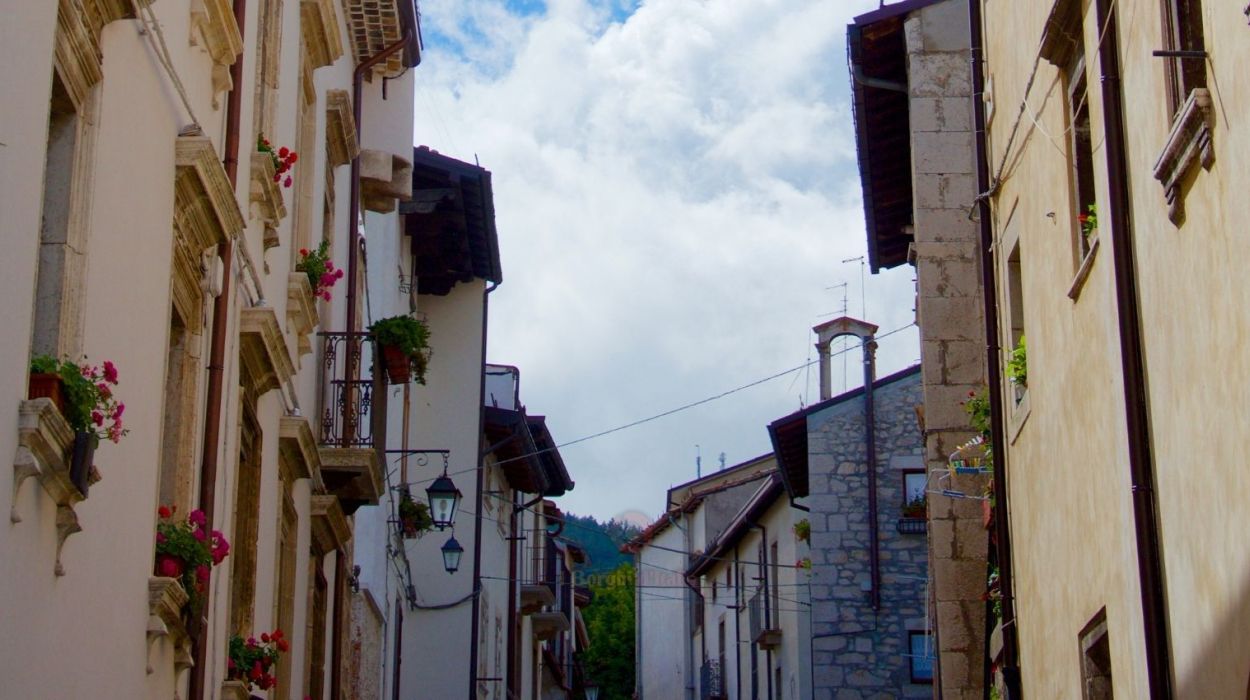
Il Borgo d’Italia
tutto da scoprire ed esplorare
Monumenti
Pescocostanzo: Un Capolavoro a Cielo Aperto Scritto nella Pietra
Pescocostanzo (AQ) non è solo un borgo: è un’enciclopedia dell’arte applicata, dove ogni palazzo, ogni portale e ogni chiesa testimonia secoli di maestria artigiana e prosperità economica. Passeggiare qui significa camminare in un museo diffuso, dove la pietra scolpita e il ferro battuto raccontano l’orgoglio di una comunità unica.
I suoi monumenti non sono solo edifici, ma l’espressione di un’identità forgiata da maestri lombardi e abruzzesi.
La Maestà Barocca: Basilica di Santa Maria del Colle
Il simbolo indiscusso e la massima espressione artistica di Pescocostanzo.
- Il Monumento Principale: La Basilica di Santa Maria del Colle domina l’abitato con la sua imponente scalinata e il suo ricco patrimonio. Ricostruita dopo il terremoto del 1456, è un magnifico esempio di architettura che fonde stili diversi, dall’esterno austero alle ricchezze interne.
- Capolavoro Ligneo: Il suo tesoro più prezioso è il soffitto ligneo a cassettoni, intagliato e dorato, opera del maestro locale Ferdinando Mosca. Un’opulenza barocca che contrasta con la semplicità delle linee architettoniche di montagna.
- L’Altare Scenografico: All’interno, spiccano anche il sontuoso altare maggiore e il cancello in ferro battuto realizzato dal maestro Santo Di Rocco, testimoniando l’eccellenza artigiana locale in ogni disciplina.
Architetture Civili: La Nobiltà Scolpita
L’eleganza di Pescocostanzo non si limita agli edifici sacri, ma si estende all’intero tessuto urbano.
- Palazzi e Vignali: Il centro storico è un armonioso susseguirsi di palazzi nobiliari e case tradizionali, quasi tutte realizzate in pietra locale. Una curiosità è la presenza diffusa del vignale (scala esterna) e dei portali scolpiti, che trasformano l’edilizia domestica in arte.
- Palazzo Fanzago: Sede di importanti attività culturali, è un esempio significativo dell’influenza di artisti come lo scultore e architetto lombardo Cosimo Fanzago, che lavorò anche alla Chiesa e Convento di Gesù e Maria. Oggi ospita il Museo del Merletto a Tombolo, onorando un’altra grande tradizione locale.
Fede e Arte Minore: I Dettagli che Fanno la Storia
A Pescocostanzo, l’arte è ovunque, anche nei complessi minori.
- Chiesa di Santa Maria del Suffragio dei Morti: Situata accanto alla Basilica, è un gioiello barocco che custodisce al suo interno pregevoli arredi e decorazioni, rendendola un punto focale per l’arte sacra.
- La Fontana Maggiore: Non solo un punto d’acqua, ma una vera e propria opera scultorea, spesso attribuita a maestri come Norberto Cicco, dove l’acqua zampilla tra bassorilievi che celebrano la vita e la comunità.
Pescocostanzo è un’esperienza tattile e visiva: non limitarti a guardare i monumenti, ammira il lavoro dei maestri orafi, dei fabbri e degli scalpellini che hanno reso questo borgo montano un’icona di bellezza e ingegno.
Curiosità
Pescocostanzo: Le Curiosità di un Borgo nato con l’Oro e il Merletto
Pescocostanzo (AQ) non è famosa solo per la sua bellezza, ma per una serie di curiosità storiche e artigianali che rivelano un passato unico nel panorama appenninico. Questo borgo, situato a quasi 1400 metri, ha saputo trasformare la pietra grezza e i metalli preziosi in vera e propria arte di vivere.
Ecco i segreti e le curiosità che rendono Pescocostanzo una destinazione d’eccezione:
L’Indipendenza e il Motto “SUI DOMINA”
Una delle curiosità più affascinanti è legata al suo spirito d’indipendenza e alla sua origine non feudale.
- Libertà Acquistata: Nel 1774, la comunità di Pescocostanzo, grazie alla prosperità economica generata dall’artigianato e dalla pastorizia, riuscì a riscattarsi dal dominio feudale, acquistando tutti i diritti sulla propria terra.
- Motto d’Onore: Questo atto di riscatto economico e morale è simboleggiato dal suo orgoglioso motto: “SUI DOMINA” (Dominatrice di sé stessa), un’espressione di autonomia e autogoverno rara per un borgo del Settecento.
La Presentosa: Non Un Gioiello, Ma una Promessa
Pescocostanzo è uno dei centri storici per l’oreficeria abruzzese e custode del gioiello più iconico della regione.
- Il Dono d’Amore: La Presentosa è un medaglione in filigrana d’oro a forma di stella, spesso con due cuori intrecciati al centro. La sua curiosità? Non era un semplice ornamento, ma un vero e proprio pegno o dono (un “presente”) che il giovane offriva all’amata come promessa di matrimonio. Indossarla significava essere ufficialmente “impegnata”.
- Canto Dannunziano: La Presentosa è stata immortalata dal Vate Gabriele D’Annunzio nel suo romanzo Trionfo della Morte, che ne descrive la forma come una “grande stella di filigrana, con due cuori in mezzo”, consacrandola nell’immaginario romantico italiano.
Il Tombolo: Un’Industria di Fili Sottili
Dietro la delicatezza del merletto a tombolo si nascondeva un’importante economia femminile.
- Eredità Lombarda: Si ritiene che l’arte del merletto a tombolo sia stata introdotta nel borgo da maestranze e artigiani lombardi (provenienti dal Nord Italia) chiamati nel Cinquecento a lavorare alle grandi opere di architettura locale. Le loro famiglie avrebbero portato con sé questa raffinata arte tessile.
- Scuola e Dote: Lavorare il tombolo divenne così cruciale che quasi ogni ragazza pescolana veniva avviata a questa arte. Il merletto faceva parte della dote della futura sposa, ed era così diffuso che Pescocostanzo oggi ospita ancora una Scuola di Merletto a Tombolo e un Museo dedicato.
Il Bosco di Sant’Antonio: Un Tesoro Naturale
Poco fuori il paese si nasconde una riserva naturale con una storia particolare.
- Bosco Sacro: Il Bosco di Sant’Antonio è un’antica area boschiva che in passato era considerata un bosco sacro dedicato probabilmente a Giove, e successivamente gestito dai monaci. La sua curiosità è la presenza di alberi secolari monumentali modellati da un’antica tecnica di potatura (“capitozzatura”) che ne ha modificato la forma rendendoli maestosi e quasi fiabeschi.
Pescocostanzo è un luogo dove ogni vicolo in pietra, ogni filo d’oro e ogni merletto a tombolo racconta una storia di eccellenza, orgoglio e amore. Quale di queste arti antiche vorresti vedere all’opera per prima?
Personaggi
Pescocostanzo: I Maestri che hanno Forgiato l’Arte, Nati e Cresciuti nella Pietra
Pescocostanzo (AQ), più che una semplice località, è stata per secoli un’autentica bottega d’arte incastonata nell’Appennino. La sua fama non è stata costruita sui condottieri o sui poeti, ma sull’impareggiabile talento dei suoi artigiani e intellettuali, che hanno portato il genio pescolano ben oltre i confini abruzzesi.
La vera ricchezza di Pescocostanzo risiede nei nomi di coloro che hanno scolpito, intagliato e studiato, rendendo il borgo un vivaio di eccellenze tecniche e culturali tra il XVI e il XVIII secolo.
L’Eccellenza degli Artigiani Intagliatori
Il borgo è celebre per aver dato i natali a maestri che hanno lasciato un segno indelebile nell’architettura sacra abruzzese.
- Ferdinando Mosca (XVII-XVIII secolo): L’Intagliatore del Legno: Il nome più significativo nell’arte pescolana è senza dubbio quello di Ferdinando Mosca. Noto intagliatore e scultore ligneo, fu l’autore del magnifico e ricchissimo soffitto a cassettoni in legno dorato della Basilica di San Bernardino all’Aquila. Un’opera che testimonia la straordinaria abilità degli artigiani di Pescocostanzo, capaci di trasformare la materia grezza in sontuoso splendore barocco.
Uomini di Chiesa e Diritto: L’Alto Profilo Culturale
La tradizione intellettuale e religiosa di Pescocostanzo è rappresentata da figure di spicco che hanno ricoperto ruoli di grande responsabilità e prestigio.
- Diomede Falconio (1842 – 1917): Il Cardinale e Diplomatico: Figura di altissimo rilievo nella Chiesa Cattolica, Diomede Falconio nacque a Pescocostanzo e raggiunse la dignità cardinalizia. Servì come delegato apostolico negli Stati Uniti e successivamente come prefetto della Congregazione degli Affari Religiosi. La sua carriera diplomatica internazionale è un vanto per il piccolo borgo, dimostrando come da qui potessero partire uomini destinati a influenzare la storia globale.
- Nunzio Federigo Faraglia (1841 – 1918): Storico e Archivista: Professore universitario, storico e archivista, Faraglia è una figura cruciale per la storiografia del Regno di Napoli. Le sue ricerche e le sue opere sono fondamentali per la ricostruzione del passato del Sud Italia, confermando l’importanza di Pescocostanzo come centro di produzione intellettuale.
L’Eredità Diffusa: Maestri Orafi e Merlettaie
Seppur spesso meno noti individualmente, intere generazioni di artigiani hanno reso Pescocostanzo famosa nel mondo.
- La Tradizione Orafa e del Tombolo: La vera celebrità del borgo risiede nei suoi maestri orafi e nelle merlettaie. Questi “personaggi” collettivi hanno tramandato le tecniche della Presentosa (il gioiello in filigrana) e del merletto a tombolo, mantenendo viva un’eredità artistica che è parte integrante dell’identità culturale abruzzese.
Pescocostanzo è il palcoscenico dei maestri. Sei pronto a farti meravigliare dal loro genio, che continua a vivere nella pietra scolpita e nell’oro filigranato?
Ricette Tipiche
L’Alta Cucina di Montagna: I Sapori Autentici di Pescocostanzo
A Pescocostanzo, la cucina non è un semplice pasto, è un rito che celebra l’opulenza della terra abruzzese e la sapienza antica della tradizione pastorale. Le ricette tipiche del borgo parlano il linguaggio del bosco, della transumanza e delle festività religiose, unendo la robustezza dei sapori di montagna a un’inaspettata raffinatezza.
Preparati a un viaggio gastronomico dove ogni piatto è un racconto di storia e passione.
I Primi: Il Tartufo e i Tesori del Sottobosco
La vicinanza al Parco Nazionale della Majella rende i primi piatti di Pescocostanzo un trionfo di ingredienti selvatici e intensi.
- Fettuccine o Ravioli al Tartufo e Funghi Porcini: Essendo al centro di un territorio ricco di boschi, il tartufo nero (spesso estivo) e i funghi porcini sono i veri re della tavola. I piatti di pasta fresca locale, come i semplici ma perfetti fettuccine o i ravioli ripieni di ricotta, vengono impreziositi da una generosa grattugiata di tartufo o da un robusto ragù di funghi, capaci di scaldare l’anima.
- Polenta Pasticciata: Nelle giornate più fredde, la polenta diventa un piatto unico e consolatorio, spesso pasticciata con strati di ragù, salsiccia locale e formaggio filante (come la scamorza o il caciocavallo).
I Secondi: La Tradizione del Fuoco e della Braceria
La cultura pastorale ha lasciato un’eredità di carni eccellenti e cotture sapienti.
- Agnello e Carni Locali alla Brace: Le carni d’agnello e di manzo provenienti dagli altopiani circostanti sono di altissima qualità. Vengono cucinate spesso alla brace o in umido, condite semplicemente con erbe aromatiche di montagna (come il rosmarino) e accompagnate da patate cotte sotto la cenere o in padella. La semplicità della cottura esalta il sapore rustico e genuino della materia prima.
- Salsiccia e Scamorza: Un classico intramontabile della braceria abruzzese, qui declinato con salsiccia di maiale locale e una scamorza affumicata che, una volta sciolta sulla griglia, si trasforma in un abbraccio cremoso e saporito.
I Dolci: La Scarsella e le Pizzelle Ghiotte
I dolci di Pescocostanzo sono strettamente legati alle festività e alle tradizioni familiari.
- La Scarsella: Il Tesoro di Pasqua: È il dolce pasquale per eccellenza, con una storia affascinante. Si tratta di una preparazione simile a un grande raviolo ripieno di formaggi freschi (come ricotta, caciotta e primo sale), zucchero, spezie, canditi e uova. La scarsella (che significa borsetta) simboleggia l’abbondanza e la prosperità; la sua pasta morbida che avvolge un ripieno ricco la rende un’esperienza sensoriale indimenticabile, per cui gli abitanti fanno la fila.
- Le Pizzelle (o Ferratelle): Anche se diffuse in tutto l’Abruzzo, a Pescocostanzo le pizzelle (chiamate anche neole o ferratelle) sono un must. Questi waffle sottili e croccanti, cotti tra due piastre roventi, vengono tradizionalmente farciti con confetture locali, crema pasticcera o cioccolato, e sono il perfetto accompagnamento per il caffè o un amaro digestivo.
Pescocostanzo ti aspetta per offrirti non solo arte e storia, ma anche i sapori più veri e robusti della Majella. Quale di queste specialità ti ispira per il tuo prossimo assaggio in Abruzzo?
